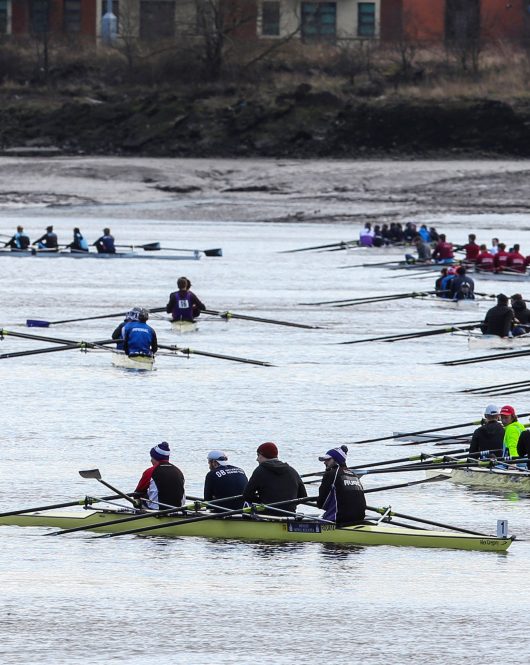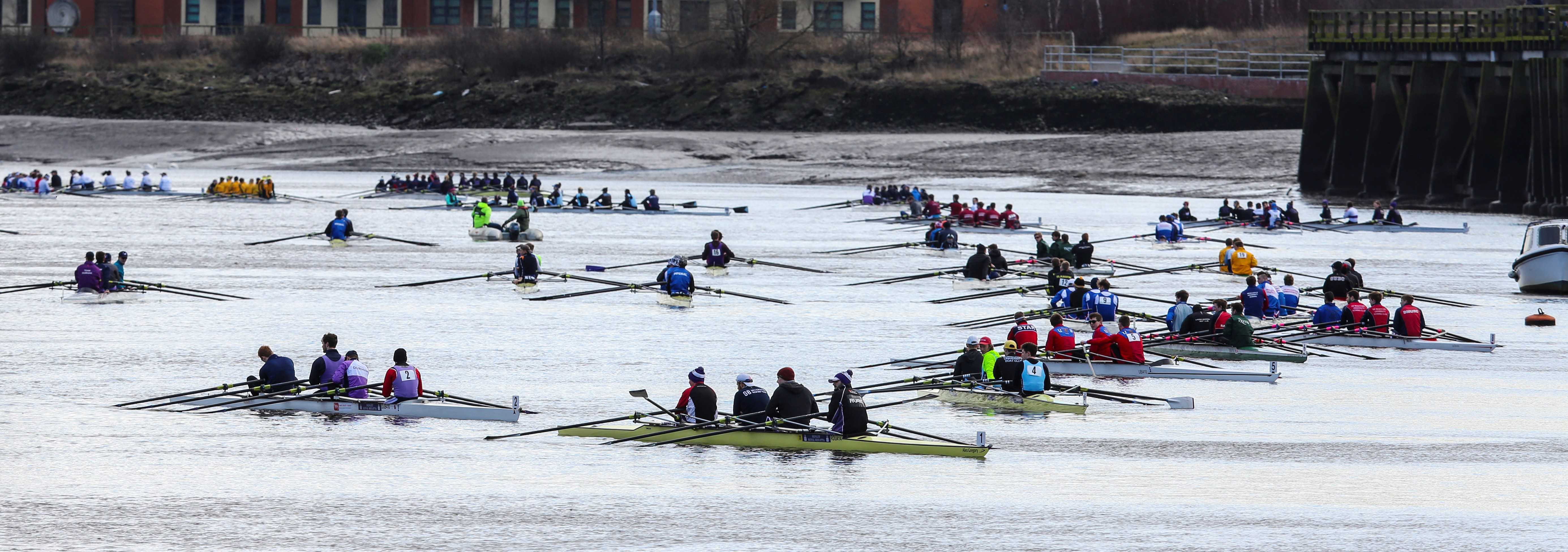Getting ready to race takes a lot of practice. Fortunately come head racing season there are a lot of different events where you can practice and improve.
When reviewing your plan for the season, you will need a winter “peak” event. This is your top priority for your group, crew or yourself. Frequently this event is the Head of the Charles or the Eights Head of the River or the Head of the Yarra. The trouble is that two of those events fall early in the head racing season and that gives you limited opportunity to practice and refine your race plan in advance with practice events. Ideally you want to do a race distance 2 weeks before your main event as a practice. If there isn’t a formal race, plan a local informal one against other people in your club or invite a nearby club to race you in a private match.
Don’t worry, this article will give you everything you need to be confident! In this article we will cover off the 3 key things you need to have practiced and how to compose them into a written race plan which will see you through any head race event.
4 Elements of your Race Plan
All races are the same. All races are different.
You need a plan for each race. All plans go out of the window once the race starts.
Exceptionally scary statements. All true and all things you need to learn how to execute to a
high level of skill.
Having a rowing coach will help you become an adaptable athlete who can race in ANY
situation.
So every race plan has these core elements:
-Start
-Technique improvement
-Speed improvement
-Finish
Yes it’s as simple as that. You need to be able to get the boat from stationary up to race pace; you need to have some way to improve your technique; some way to go faster, and a finishing sprint.
How you string these together is where your experience comes in. The degree of sophistication of each depends on your skill, your personal preferences and whether you are a longstanding or new crew. Because some take more practice than others and you NEVER want to do something different in a race. No. NEVER. Because you’ll likely mess it up. So don’t risk your race result.
Let’s figure out some options for each of your 4 elements of your plan. For each of these, choose the version which you think works best for you. Practice them all (at least 3 times) before you select one. There are no wrong answers – your choice is about the one that WORKS. And your skill at executing now may be different next month or next year… so your choice is not fixed forever. Be open to new things as an athlete. It helps build your flexibility and adaptability.
Start – Do you prefer a standing or rolling (flying) start? And what sequence of strokes gets you up to race pace (rate and speed) the best? Some like to wind to over race rate and then come down onto the race rating you choose. Work out how rapidly you can raise pressure and rate – how many strokes does it take? Do you need 200 meters or can you do it in 6 strokes? How good is your cox at judging distance before the start line? Because you want to be at pace as you pass the start line…. Ideally not more than 2 strokes before and certainly not after the start of a head race – that’s slowing your total time.
Technique improvement – We all come off our technical pattern from time to time when we are tired. What are the top 3 technical things which improve your boat speed? Work this out with a speed meter – could be squaring early, power through mid-drive or a better rhythm and relaxation. Whatever it is, practice how to get it back fast. Practice it together as a crew. Can you get it back in 1 stroke? Or does it take 3 or more? What words summarise what you are seeking? Choose one single phrase which has meaning for you all. It should be snappy so your bow man or cox can say it fast and you can execute it quickly (not losing time over many strokes while having a long-winded explanation). Pick those 3 technique improvements and practice getting the technique back when you lose it. Your goal is to get the rowing stroke pattern back 1 stroke after it’s called. And if you’re in a single scull you can still make those calls in your mind – I find this very helpful when racing – it makes me more decisive to think I have a cox in my head telling me what to do and when.
Speed improvement – A well-drilled crew will have speed lags through a race – when the rudder comes on, when someone has a poor stroke or when your technique drifts off the pattern. Getting a push or a power move in will help maintain your speed. Your goal for a head race is to maintain a robust average speed – try to stay close to your mean and not go a lot faster or a lot slower – it’s most efficient like this. And so when the speed drops on your meter – call a push. When approaching a corner have a push to improve speed before you have to steer and another push when you’ve finished steering and are straight again. Also use your pushes to attack landmarks like bridges or another crew nearby and you are overtaking or being overtaken. Whatever your push is (10, 15 or 20 strokes long) you can make it more effective by doing a technique improvement first for 3 strokes and then following with the power push call. A skilful crew doesn’t slack off after the push ends – they maintain the new boat speed for as long as they can.
Finish – Sprinting for the line takes judgement – how high can you rate? Normally your boat moves one boat length per stroke (further for small boats) and so taking more strokes per minute moves you faster. How high can you rate before losing speed and technique? How long can you maintain a higher boat speed and rate before your technique or fitness fails? My experience is that most crews under-estimate their ability to sprint. If you think you can sprint the last 500 meters – I challenge you to attack your finish 200 meters earlier than you think you should – see if you can last the course. If you can do that, in the next race try going earlier by another 200 meters. You need to find out where you fail in order to judge what’s best. Ideally your final stroke is the worst one of the race as you cross the line. Then you know you couldn’t have raced harder or faster.
Playing it safe versus taking risks
In the description of the finish above I explain the type of risk that you may need to take while doing a head race. You risk running out of energy and power before the finish line by sprinting early. If you don’t take risks, you’ll never do your best race. Your risks can be small and incremental – like choosing to rate a half point higher in the mid-race than you think you want to. Or adding in a push when you sense mental capacity is getting tired in the third quarter. I hope that you are pleasantly surprised by your performance.
But if your risk doesn’t work out, you need a strategy to get back on track and to last the distance. One way to do this is to practice making a strong rhythm at a rate one point below your target race rate. Can you move the boat well at that rate? If yes, then try taking the rate and power up again after re-establishing the rhythm.
Write out your race plan
Look at the map of your race course, divide it up by distance, time, landmarks or all three and then write out long hand down a page what race plan you intend doing.
Here’s an example:
-Start
-250 meters hit the race rate and rhythm
-Push 10 into 500 meters
-Technique 10 – catches
-Push 10 into first corner
-Push 10 out of the corner
Etc .. you get the idea. This framework allows the whole crew to understand the logic behind
each move. Pushes and technique interspersed with the distance / time / landmarks.
Plan variations during the race can happen based on what is actually happening around you…
This is where your cox or caller needs to be trusted to judge a situation and select the response which will best advantage your crew. If there’s a crew up ahead which you can overtake, don’t wait for the corner to make your push, go for them early – tell the crew the distance from the crew in front (4 lengths, 2 lengths, overlap) and use that focus to maintain higher average speed. When overtaking, never stop pushing after you are past them, you MUST move away from that crew to prevent them sensing they could attack back and overtake you. If being overtaken, use your pushes to stay in front of them. If you are steering, leave moving out of their way until the last possible moment and then move gradually so you don’t upset the rhythm in your boat. Cut back in behind them at the earliest possible moment. And when you can see the crew behind, focus on your boat rhythm – too often crew members look at the other boat and end up rowing in their rhythm – which makes your boat slow down.
And so you now have all the techniques you need to build a robust race plan, you know how to adjust it based on different head race events of differing distance and also what to do when racing to adjust your plan to take advantage of situations. Now all you need to do is to practice those moves, agree your calls and enter a race.
Visit the Faster Masters Rowing website to find out more information, as well as how they can help you with your training & planning.
View more content like this

Winning Head Races in Rowing
Getting ready to race takes a lot of practice. Fortunately come head racing season there are a lot of different events where you can practice
Benefits Of An Endurance Training Plan
Endurance training will help you to build stamina and through this type of training your body will gradually be able to withstand longer exercise routines.
Who actually completed the Club Training Programme? Anybody?
Most coaches have no absolutely no insight into what training any given athlete has completed over a season. They could produce a copy of the



